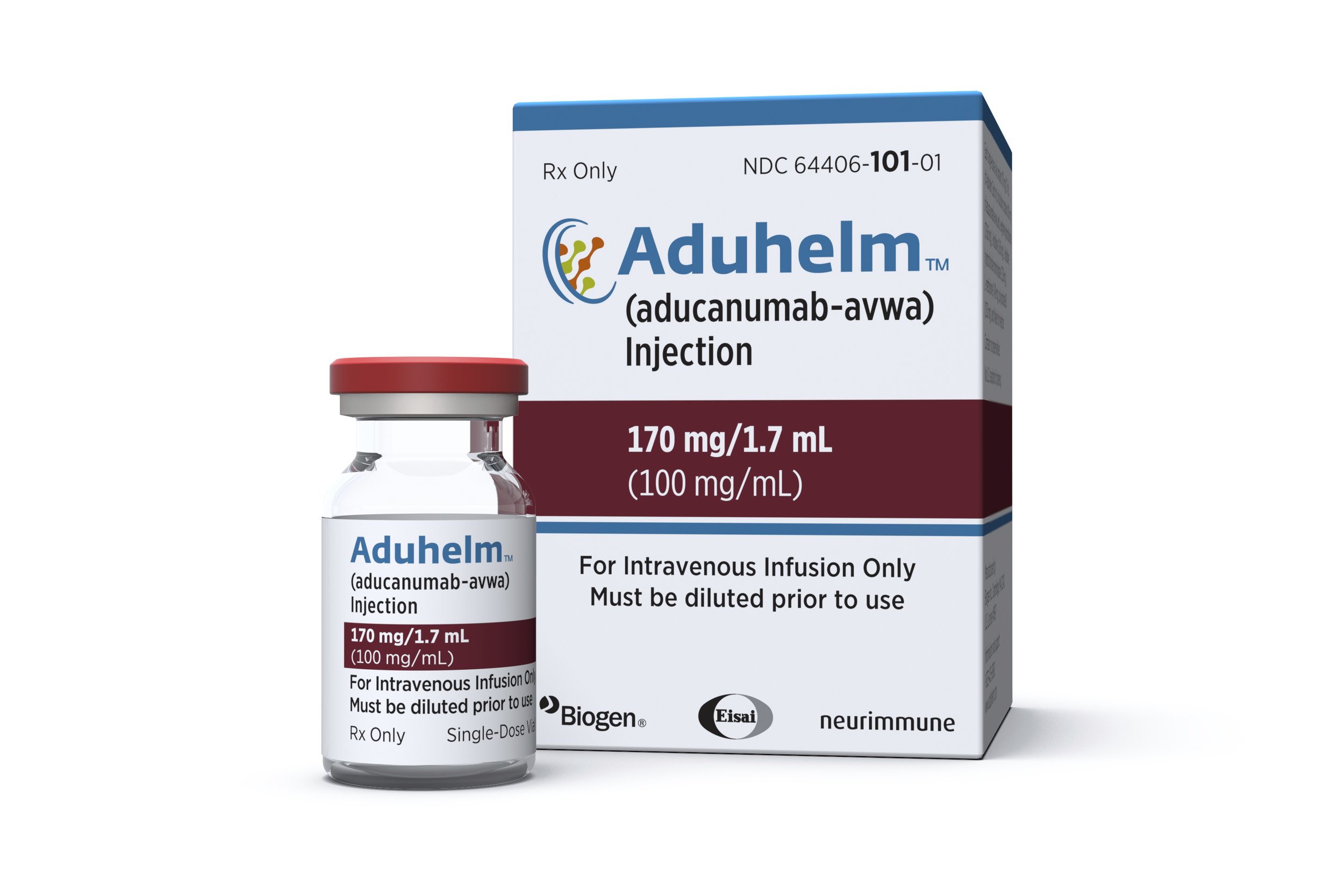Treating an Alzheimer’s Patient
One of the Alzheimer’s drugs mentioned below- Aducanumab, or Aduhelm
As I mentioned two blog posts ago, I’m going to discuss the treatments from various ancient cultures and see how they can be applied to how Alzheimer’s is treated now. But, before I do that, in this blog post, I want to outline the different drugs and care approaches that are being employed right now for Alzheimer’s patients in the United States.
In order for drugs to be discovered, a target needs to be identified. Usually, drug targets are proteins and acids. In 1984, scientists found just that. They discovered that a protein called Beta-amyloid (Aβ) was the main component of the plaques found in Alzheimer’s patients’ brains. Later, in 1986, Tau protein was discovered, which was the main component of tangles found in the brains. Acetylcholine is a neurotransmitter and is important for brain and body functions. It was discovered in 1914 and was a popular drug target. Using this information, in 1993, the drug developed by the National Institute of Aging partnered with the Alzheimer’s Association and Warner-Lambert Pharmaceutical Company, tacrine, was approved.
The drug took around 6 years to develop, and it went through clinical trials anywhere from 3 to 36 weeks. During those trials, 3,555 patients were given tacrine and their changes were observed. The scientists were looking for unusual effects, cognitive function, functional ability, mental deterioration among other things. Tacrine targeted the enzyme acetylcholinesterase, acting as an enzyme inhibitor and cognitive enhancer. But Tacrine was banned in 2013 because of its toxic effects on the liver.
From the time tacrine was approved, around 140 Alzheimer’s drugs have been developed. The most popular prescribed drug is Donepezil. It was developed by Eisai, approved in 2004, and is a reverse inhibitor of the enzyme acetylcholinesterase. Its main function is to increase the amount of acetylcholine, which improves mental function. Though it is not a cure, it decreases the progression of Alzheimer’s symptoms.
Another drug worth mentioning is Aducanumab. It was developed by Biogen and Eisai and was approved in June of 2021 by the FDA, after almost 15 years of development. This drug targets the plaques of Aβ, trying to decrease the amount in the brain. The success rate of this drug is at 20%, historically low, due to the brain swelling and bleeding caused by it.
Right now, an important and promising drug is in clinical trials. It is called Lecanemab, and it was developed by Eisai and BioArctic. It is another drug that targets the insoluble forms of Aβ. The reason many drugs target Aβ, rather than other drug targets like enzymes, is because it is an important aspect of Alzheimer’s Disease. Compared to tau tangles, there are more Aβ plaques in the brain.
